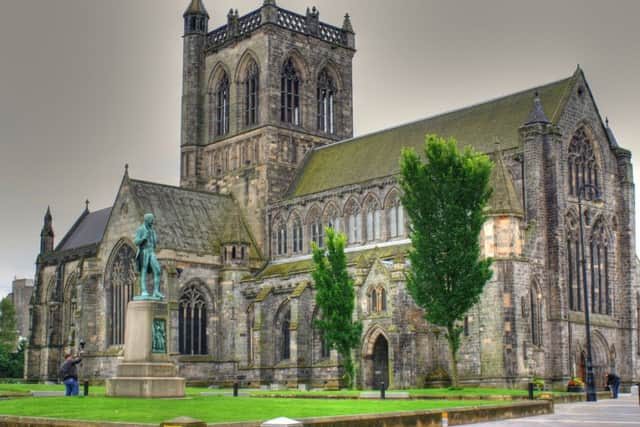Brian Ferguson: Paisley's City of Culture bid is impressive stuff


It may raise a few eyebrows that my latest one was notched up on a rainy Monday night in Paisley in the middle of October. But that is exactly what happened when I ventured into its historic abbey for the showpiece event of the annual Spree Festival.
There wasn’t a spare seat to be had for the RSNO’s latest gala in the 850-year-old venue. After previous outings with Admiral Fallow, Idlewild and The Twilight Sad, it was the turn of Del Amitri singer Justin Currie to give his fans a night to remember. Not so long ago, the idea of Paisley staging a big festival at a relatively dead time of year in the cultural calendar would have been dismissed by many as madness. But music fans have been beating a regular path to see acts like King Creosote, Admiral Fallow, James Grant, WHITE, Karine Polwart and James Yorkston. Such has been the success of the festival, which wrapped up on Saturday with another sell-out featuring leading Celtic acts Skerryvore and Treacherous Orchestra. Other highlights included a rare chance to see three Scottish Album of the Year winners - RM Hubbert, Anna Meredith and Kathryn Joseph - under the one roof, an intimate show from Idlewild frontman Roddy Woomble and a celebration of Paisley’s celebrated “weaver poet,” Robert Tannahill.
Advertisement
Hide AdAdvertisement
Hide AdPaisley’s winter events get under way this week with a gothic horror stage production based on Edgar Allan Poe’s 1845 poem The Raven, created by Glasgow theatre-maker Al Seed. Dipping into the Spree Festival on Monday night, including a late-night venture into the temporary “Spiegeltent” venue which provides much of the focus for the Spree Festival, offered a tantalising glimpse of the future. This was partly down to the lowdown I had been given earlier in the day into some of the plans driving Paisley’s bid to become a UK City of Culture.
A walk around the centre of Paisley may, on first appearances , resemble that of most other post-recession Scottish town centres, with familiar signs of downturn long having taken hold. But behind the bold Paisley 2021 brand campaign, unveiled with much fanfare in May, lay an intriguing effort to kick-start economic regeneration by putting culture and heritage centre stage. At the heart, are a £56.7 million extension for its museum, a new 300-seater theatre, and the establishment of a new High Street fashion and textiles centre. Half a million pounds has been set aside for a new cultural pot to allow projects to be staged in the run-up to 2021. Town centre managers are encouraging culture organisations to take over long-abandoned historic buildings. The impression is being given that these things will happen regardless of whether the culture crown is claimed. If that is the case, then it will surely not be long before it is widely known that Paisley boasts the highest concentration of listed buildings in Scotland outside Edinburgh?
The history of textile manufacture in the town, which dates back to the early 18th century, is certainly deserving of greater awareness. But could the “Paisley Pattern” undergo a similar revival to the one which has seen Harris Tweed become so important to the economy of the Western Isles? Paisley is clearly confident about its chances of a winning bid, which one could easily envisage artist John Byrne, sculptor Sandy Stoddart, singer Paolo Nutini and actor David Tennant embracing. But regardless of the result in just over a year’s time, a major cultural change appears to be well on its way.